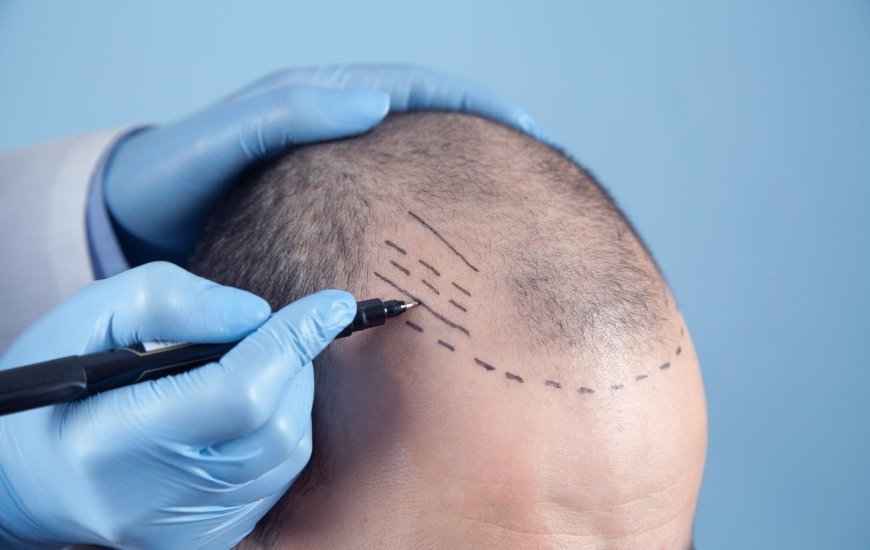6-Month Crown Hair Transplant Progress Timeline

Crown baldness, also known as vertex thinning, is one of the most persistent and noticeable forms of hair loss, particularly among men. While medications can slow down its progression, they often fall short when it comes to regrowing hair. For many, the ultimate solution lies in a Crown hair transplant in Islamabad—a proven procedure that delivers permanent results. This blog outlines what you can expect during the first six months after your crown hair transplant, helping you prepare for the journey ahead.
Why the Crown Area Takes Time
The crown area poses unique challenges compared to the frontal scalp. Hair grows in a spiral pattern, which makes graft placement more complex. Additionally, the blood supply to the crown region isn’t as rich as in other areas, meaning hair growth may take longer to become visible.
The six-month mark is a critical checkpoint in the hair restoration timeline. While final results take up to 12–18 months, a significant amount of progress is typically seen by month six. Let’s walk through what happens each month leading up to this milestone.
Month-by-Month Crown Hair Transplant Progress
Month 1: Healing and Shedding
-
What to Expect:
In the first week, your scalp will feel tender, and tiny scabs will form around the transplanted grafts. Redness and swelling are common but temporary. -
Key Changes:
Around 2 to 3 weeks post-surgery, the transplanted hairs begin to shed—a natural and necessary part of the process known as “shock loss.” -
Tips:
-
Avoid scratching or rubbing the crown.
-
Use the recommended saline spray and gentle shampoo.
-
Sleep with your head elevated.
-
Note: Don’t panic during the shedding phase; it means the follicles are entering a new growth cycle beneath the surface.
Month 2: Dormant Phase
-
What to Expect:
This month can be discouraging for many patients because not much happens visibly. The scalp may appear similar to its pre-surgery state. -
Key Changes:
The transplanted follicles are resting beneath the skin. They’re preparing to re-enter the growth phase. -
Tips:
-
Continue taking any prescribed medications such as minoxidil or finasteride.
-
Protect your scalp from direct sun exposure.
-
Month 3: Early Growth Begins
-
What to Expect:
This is when the first signs of new growth become visible. Fine, soft hairs may begin to emerge in the crown region. -
Key Changes:
-
Hairs will be thinner and lighter than the surrounding hair.
-
You may experience mild itchiness as the follicles awaken.
-
-
Tips:
-
Keep taking before-and-after pictures to track progress.
-
Be patient—growth is still in its early stage.
-
Month 4: Noticeable Development
-
What to Expect:
Around this time, most patients begin noticing real changes. Hair density begins to improve slightly, though it’s still not at its peak. -
Key Changes:
-
New hair strands grow longer.
-
The crown starts to look fuller, especially under certain lighting.
-
-
Tips:
-
Eat a protein-rich diet to support hair health.
-
Avoid chemical treatments or excessive heat styling.
-
Month 5: Thicker Coverage
-
What to Expect:
By month five, the growth rate picks up. Hair in the crown area becomes thicker, darker, and more textured. -
Key Changes:
-
Spiral patterns begin forming naturally in the crown.
-
Hair can be combed or styled more freely.
-
-
Tips:
-
You can begin using mild styling products if your surgeon approves.
-
Stay consistent with your hair care routine.
-
Month 6: Major Transformation Point
-
What to Expect:
At the six-month milestone, significant progress is typically evident. While this isn’t the final result, most patients feel a marked improvement in hair volume and coverage. -
Key Changes:
-
50%–70% of the final hair growth is visible.
-
Hair appears stronger, with better texture and density.
-
Bald patches in the crown are visibly reduced.
-
-
Tips:
-
Consider visiting your surgeon for a follow-up to assess your results.
-
Avoid harsh salon treatments and chemical dyes.
-
What Makes Crown Growth Slower Than the Frontal Scalp?
Several reasons contribute to the crown area’s slower growth:
-
Blood Circulation: The crown receives less blood supply than the front, leading to slower follicle recovery and growth.
-
Hair Direction: Unlike the front where hairs are placed in a straight direction, crown grafts follow a spiral pattern, which takes time to fill in evenly.
-
Skin Tightness: The scalp in the crown area can be tighter, making it harder for transplanted follicles to anchor and grow initially.
What to Expect Beyond 6 Months
Although 6 months marks a major turning point, keep in mind that your final results are still months away. Between months 6 and 12:
-
Hairs continue to thicken and darken.
-
Any gaps or thin spots will usually fill in completely.
-
Hair texture improves, blending naturally with the surrounding area.
Patience and proper post-op care are essential during this phase.
Tips to Maximize Crown Transplant Results
To ensure optimal growth and healthy recovery, follow these best practices:
-
Stay Hydrated: Dehydration can affect scalp health and hair growth.
-
Nutrient-Rich Diet: Include iron, biotin, zinc, and vitamins A, C, and E.
-
Avoid Smoking and Alcohol: These can impair blood flow and delay healing.
-
Regular Follow-ups: Keep in touch with your surgeon to monitor your recovery and progress.
-
Gentle Hair Care: Use sulfate-free shampoos and avoid pulling or tugging on your hair.
Emotional Benefits at 6 Months
Many patients report a noticeable boost in self-confidence by the six-month mark. The growing density in the crown area reduces self-consciousness, allowing people to wear their hair shorter or experiment with new styles that were not possible before.
Conclusion
A six-month crown hair transplant journey reflects incredible transformation—from shedding and dormant phases to visible regrowth and improved coverage. Although final results take a full year or more, the six-month point provides an exciting glimpse into your new, fuller crown.
For expert consultation and advanced hair restoration services, schedule your appointment with Dynamic Clinic—where science meets precision for exceptional hair transplant outcomes.
What's Your Reaction?

































































